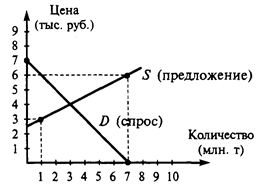Landscape Engineering
I’m a second-year student. My future speciality is Landscape engineering. What does it mean? The word landscape is from the Dutch, landschap (the German cognate is landschaft) meaning a sheaf, a patch of cultivated ground. The word first appeared in English to describe a painted view of the land. A landscape also comprises the visible features of an area of land, including physical elements such as landforms, living elements of flora and fauna, abstract elements such as lighting and weather conditions, and human elements, for instance, human activity or the built environment. Landscape can also mean the objects around you in a building. Landscape engineering applies to mathematics and science to create useful landscapes, that means the interdisciplinary application of engineering and other applied sciences to the design and creation of anthropogenic landscapes, and embraces traditional reclamation. It includes scientific disciplines: botany, ecology, forestry, geology, geochemistry, hydrogeology, and wildlife biology. It draws upon applied sciences: engineering, geomorphology, landscape architecture, and mining, geotechnical, and civil engineering. Landscape engineering also embodies all elements of traditional engineering (planning, investigation, design, construction, operation, assessment, research, management, and training), and it is focused on three main areas: goal setting and design of the landscape as a whole, the design of individual landforms, landscape performance assessment. The iterative process of planning, design, and performance assessment by a multidisciplinary team is the basis of landscape engineering. Landscape designers and Landscape technicians or engineers are employed with landscape construction and service companies. Landscape designers, like garden designers, design all types of planting and green spaces. Many landscape engineers work in public offices, in central and local government while others work for landscape architecture firms. Landscape managers use their knowledge of plants and the natural environment to advise on the long-term care and development of the landscape. They work in horticulture, estate management, forestry, nature conservation and agriculture. Landscape scientists have special skills such as soil science, hydrology, geomorphology or botany that they relate to the practical problems of landscape work. Their projects can range from site surveys to the ecological assessment of broad areas. Landscape planners are concerned with landscape planning for the location, scenic, ecological and recreational aspects of urban, rural and coastal land use. Garden designers deal with the design of new private gardens and also with historic garden conservation. Some words should be said about ecology. Landscape ecology is a subdiscipline of ecology and geography that is the study of spatial variation and interested in landscape elements (such as fields, hedgerows, woodlots, rivers or towns) and how their distribution affects the distribution and flow of energy and individuals in the environment. Landscape ecology, as a theory, stresses the role of human impacts on landscape structures and functions and proposes ways for restoring degraded landscapes. Landscape ecology theory includes the landscape stability principle. All above mentioned proves that the landscape engineers face and are to solve many tasks while working. The speciality requires a wide range of knowledge. And I shall do my best to become a qualified educated specialist.
3. Прочитайте однокоренные слова, догадайтесь о их значении, уточните правильность перевода по словарю:
to create – created – creative – creation – creature; to apply – applied – application – appliance; special – speciality – specialist; to specialize – specialized – specialization – specialism; to conserve – conservator – conservative – conservancy – conservation; to degrade – degraded – degrading – degradation.
|




